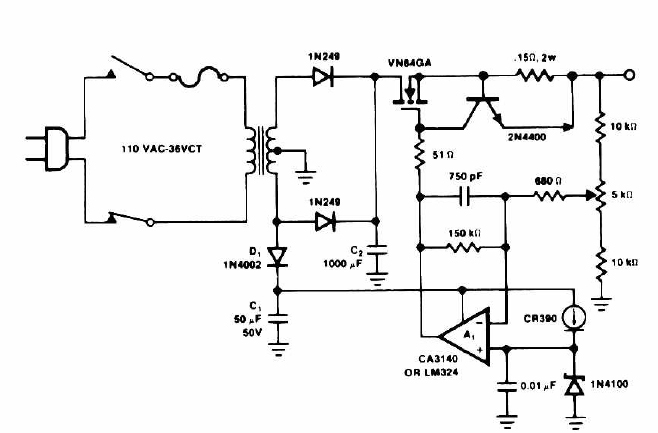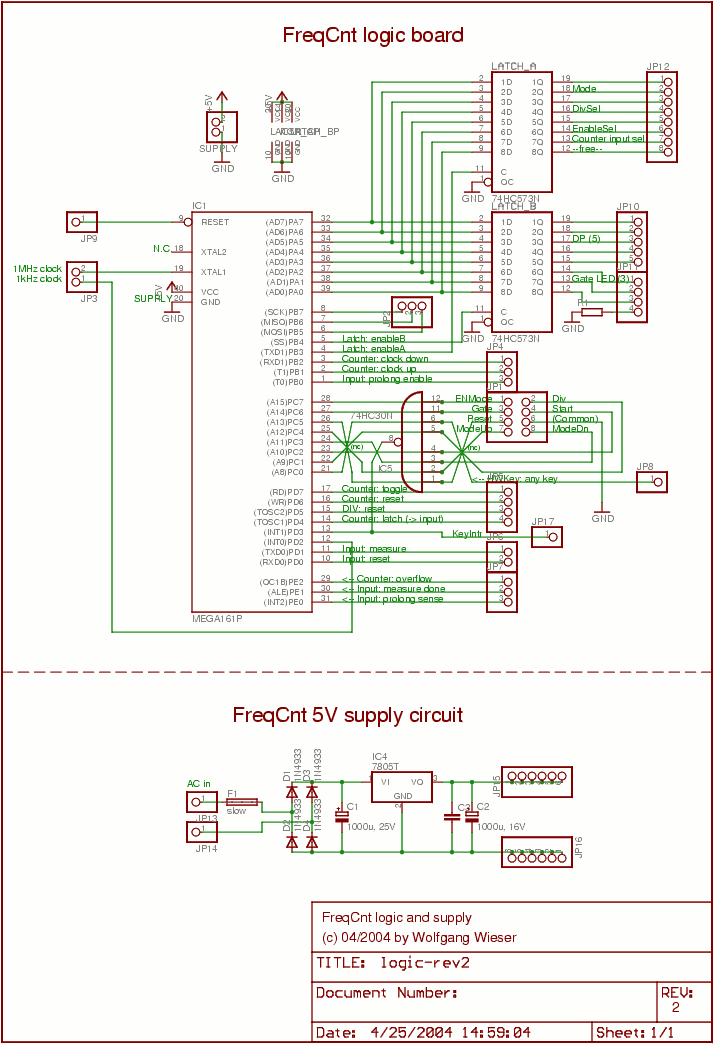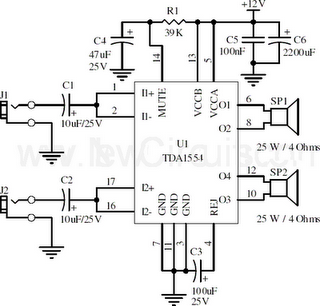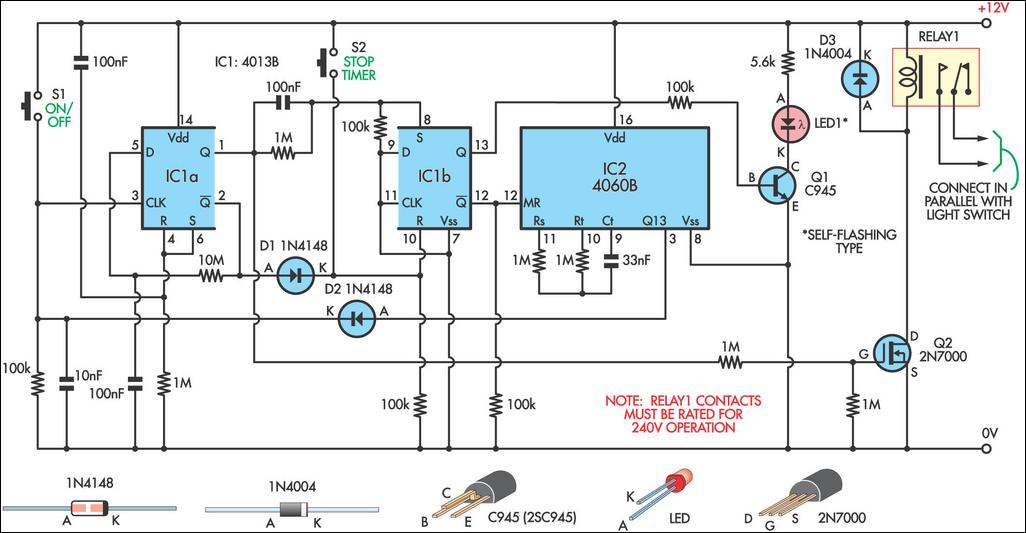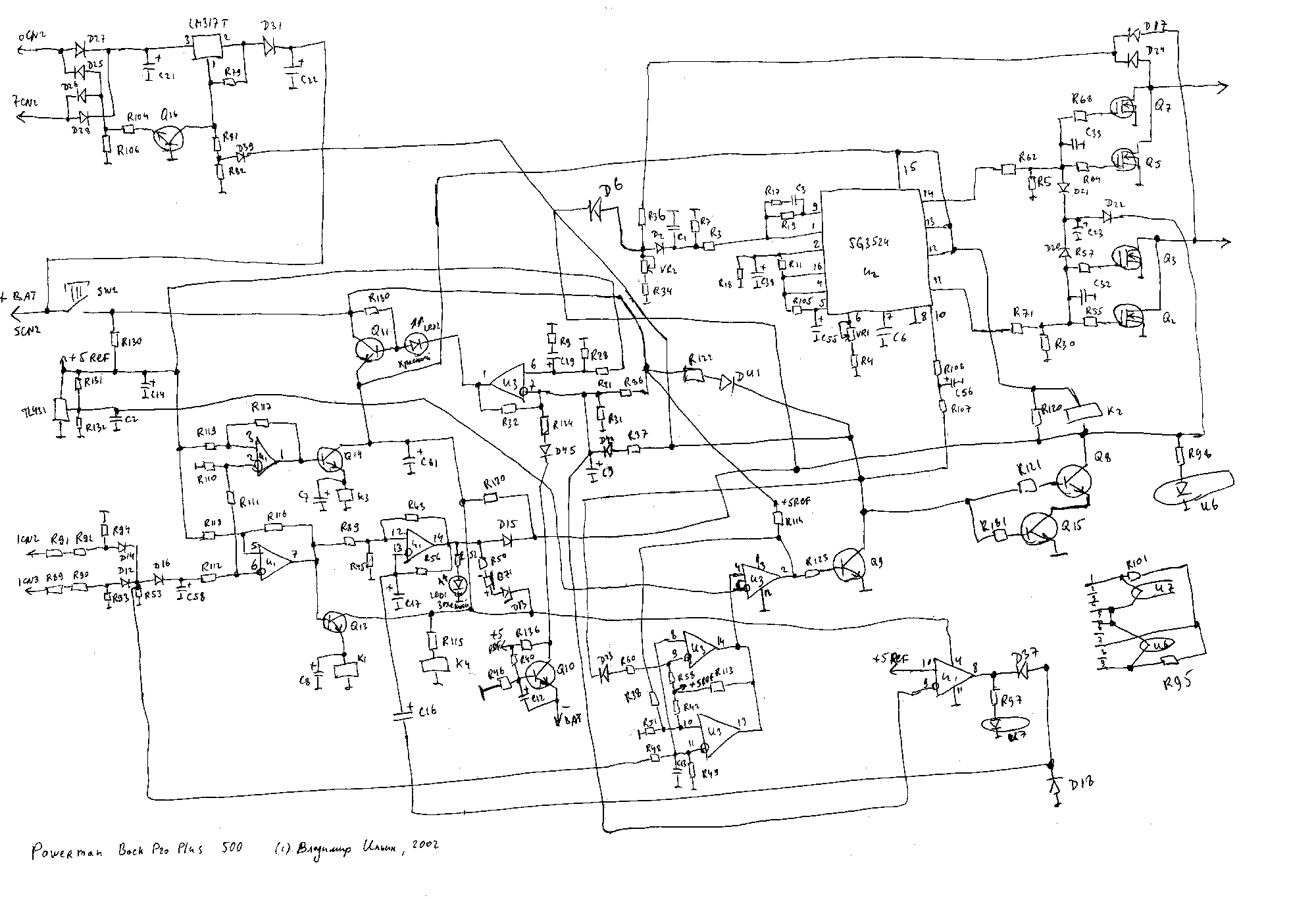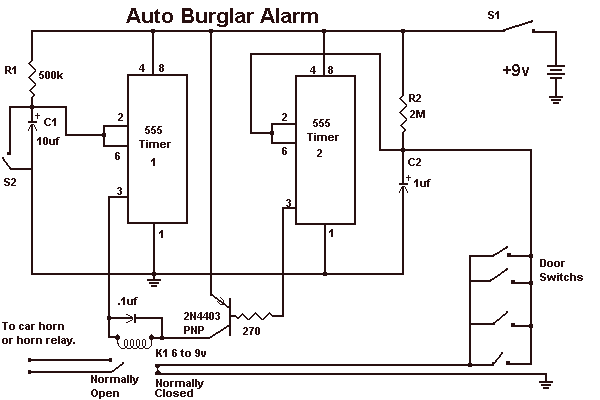
timer 555 schematic
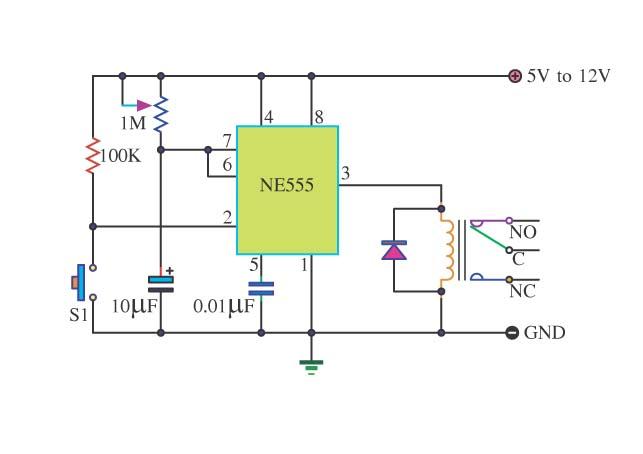
The Simple Timer with a 555 timer is a basic timer circuit that can be utilized in various electronic devices. This circuit leverages the monostable multivibrator mode of the 555 Integrated Circuit (IC). The output control circuit is designed to operate a relay that can manage equipment powered by an AC voltage source. The 555 timer circuit is compatible with a supply voltage ranging from 5 to 12 VDC, depending on the specifications of the relay used. The timer is activated by pressing switch S1, initiating the timing process. The relay offers two connection options: normally closed (NC) and normally open (NO). The timing duration of the 555 timer circuit, configured with resistors and capacitors, is determined by a 1 MΩ variable resistor (VR1) and a 10 µF capacitor (C). The active timing duration can be calculated using the formula T = 1.1 RC, where T is the time in seconds, R is the resistance in ohms, and C is the capacitance in farads. For improved accuracy, high-quality components should be used, specifically a tantalum capacitor and a resistor with a tolerance of 1%.
The Simple Timer circuit using the 555 timer is a versatile and straightforward design suitable for various applications, including automatic lighting systems, delay timers, and pulse generation. The 555 timer operates in monostable mode, meaning it outputs a single pulse when triggered. Upon pressing switch S1, the circuit transitions to its active state, and the timing begins. The duration of the output pulse is controlled by the RC time constant, which is a product of the resistance (R) and capacitance (C) values in the circuit.
In this configuration, the variable resistor (VR1) allows for adjustable timing, enabling users to set the desired duration of the output pulse. The capacitor (C) stores charge and discharges through the resistor, determining how long the output remains active. The choice of components is crucial for achieving precise timing; thus, using a tantalum capacitor, known for its stability and low leakage current, alongside a high-quality resistor, ensures minimal deviation from the expected timing.
The relay output can handle AC loads, making this circuit applicable for switching devices such as lamps or motors. The selection between normally closed and normally open connections allows for flexibility in design, depending on whether the load should be activated or deactivated upon triggering the timer. The circuit can be powered by a DC supply within the specified voltage range, making it adaptable for various electronic projects. Overall, the Simple Timer circuit with a 555 timer is an effective solution for timing applications in both hobbyist and professional electronic designs.Simple Timer With 555 is one example of a simple timer and can be applied to electronic equipment. With 555 Timer Simple series takes advantage of the mode of the IC monostable multivibrator 555. With the relay output control circuit can be used to control equipment with AC voltage source. With 555 Timer Simple circuit can work with source voltage of 5 - 12VDC depending on the relay used. In order to use Simple Timer With this 555 can be started by pressing the switch S1 to start the process of timing. In the relay there are 2 options that is normaly Close connection (NC) and normaly open (NO). The duration of the timing circuit 555 Simple Timer With RC configuration is determined by the VR 1 MOhm and C 10uF.
Active timer duration can be calculated with the formula T = 1. 1 RC where T (seconds), R (Ohm) and C (farad). To get more accurate results R and C components referred to in the formula should use good quality components, namely C of tantalum material and R with the quality of 1%. 🔗 External reference
The Simple Timer circuit using the 555 timer is a versatile and straightforward design suitable for various applications, including automatic lighting systems, delay timers, and pulse generation. The 555 timer operates in monostable mode, meaning it outputs a single pulse when triggered. Upon pressing switch S1, the circuit transitions to its active state, and the timing begins. The duration of the output pulse is controlled by the RC time constant, which is a product of the resistance (R) and capacitance (C) values in the circuit.
In this configuration, the variable resistor (VR1) allows for adjustable timing, enabling users to set the desired duration of the output pulse. The capacitor (C) stores charge and discharges through the resistor, determining how long the output remains active. The choice of components is crucial for achieving precise timing; thus, using a tantalum capacitor, known for its stability and low leakage current, alongside a high-quality resistor, ensures minimal deviation from the expected timing.
The relay output can handle AC loads, making this circuit applicable for switching devices such as lamps or motors. The selection between normally closed and normally open connections allows for flexibility in design, depending on whether the load should be activated or deactivated upon triggering the timer. The circuit can be powered by a DC supply within the specified voltage range, making it adaptable for various electronic projects. Overall, the Simple Timer circuit with a 555 timer is an effective solution for timing applications in both hobbyist and professional electronic designs.Simple Timer With 555 is one example of a simple timer and can be applied to electronic equipment. With 555 Timer Simple series takes advantage of the mode of the IC monostable multivibrator 555. With the relay output control circuit can be used to control equipment with AC voltage source. With 555 Timer Simple circuit can work with source voltage of 5 - 12VDC depending on the relay used. In order to use Simple Timer With this 555 can be started by pressing the switch S1 to start the process of timing. In the relay there are 2 options that is normaly Close connection (NC) and normaly open (NO). The duration of the timing circuit 555 Simple Timer With RC configuration is determined by the VR 1 MOhm and C 10uF.
Active timer duration can be calculated with the formula T = 1. 1 RC where T (seconds), R (Ohm) and C (farad). To get more accurate results R and C components referred to in the formula should use good quality components, namely C of tantalum material and R with the quality of 1%. 🔗 External reference
Warning: include(partials/cookie-banner.php): Failed to open stream: Permission denied in /var/www/html/nextgr/view-circuit.php on line 713
Warning: include(): Failed opening 'partials/cookie-banner.php' for inclusion (include_path='.:/usr/share/php') in /var/www/html/nextgr/view-circuit.php on line 713
